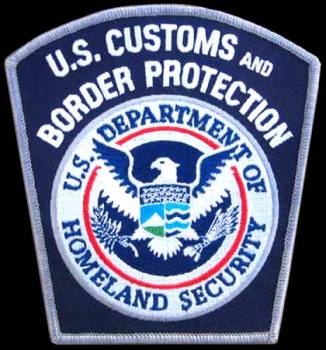by Emily Danchuk
Customs and Border Protection is a resource to stop illegal profits from copyright theft.

Many of my clients complain about knock-offs of their products being imported from China or India and sold in the United States. When they ask what they can do about it, my answer is usually, “Well, let’s stop the product at the border.” I explain that the client can record their copyright registrations with Customs and Border Protection’s (CBP) e-recordation program.
However, that’s where the extent of my (previous) knowledge ended. I had assumptions about the e-recordation program. I assumed it only protected big companies like Coach and Louis Vuitton. And I assumed that small businesses didn’t have the sway with the government entity to ask for seizure of infringing goods. I thought the program wasn’t very effective all-around.
In order to rectify my limited knowledge and previous assumptions about Customs and Border Patrol’s Intellectual Property Rights programs, I scheduled a meeting with several CBP specialists to learn more about the e-recordation program.
I met with Marian Suster and Chuck Thompson. These two CBP Import Specialists were gracious enough to walk me through the program, step-by-step.
Here’s what I learned about this invaluable tool and lethal weapon against importation of infringing products:
Once a copyright owner registers their works with the U.S. Copyright Office, they can then record their copyright registrations with CBP. This is done via the Intellectual Property Rights e-Recordation Program (scroll down and click “Begin Application.”) The cost for e-recordation is $190, and you don’t need to hire a lawyer to file. The application is self-explanatory.
It may seem like a costly exercise, but it is worth it, as you’ll see. You should have your U.S. Copyright Registration number and digital images of the protected works. If a copyright owner does not record their copyrights with CBP, there is no authority for CBP to seize or detain any infringing goods, so e-recordation is essential.
If the copyright owner knows of an infringing product being brought into the United States, they should then file an e-allegation here. The copyright owner should provide any information known about the infringing product. This includes digital images of the original product, the manufacturer of the product, country of export and related information. As Marian Suster puts it, “the more information provided by the copyright owner, the better for Customs and Border Protection.”
If goods are suspected of being infringing, they will be detained for up to thirty days for CBP to determine whether to seize the goods. Upon detention of the goods, the copyright owner will be advised of the country of origin, the date of importation, the port of entry, a description of the merchandise and the quantity of merchandise.
If the goods are found to be infringing, the goods will be seized. The copyright owner will be advised of the country of origin, the date of importation, the port of entry, a description of the merchandise and the quantity of merchandise and the name and address of the manufacturer, exporter and importer (this information can often be priceless in any lawsuit or infringement matter.) CBP has the authority and expertise to determine whether goods are suspected of being infringing or actually are infringing.
It is important to note a couple of things here:
- CBP cannot detain or seize infringing goods unless the owner of the original goods has recorded the relevant copyright or trademark with CBP. They don’t have jurisdiction to do so.
- The copyright owner may record their copyright and trademark registrations with CBP at any time. Then, any future shipments will be searched for infringing goods.
The power that CBP has to detain and seize goods is immense. The copyright or trademark owner must only take a few steps to essentially prevent knock-offs from entering through our borders.
One way copyright owners can assist CBP in recognizing knock-offs of their original products is to invite CBP into their place of business. This is done through C-TPATS, the Customs-Trade Partnership Against Terrorism Security link portal.
CBP will, at no cost, meet with copyright owners and become familiar with their products. In this way, CBP agents can more easily spot knock-offs at the border. Copyright owners can create a company profile with C-TPATS through the C-TPATS portal. This will assist artists and small businesses in providing much needed information to CBP.
My meeting with these CBP agents helped me to discover a very under-utilized tool in helping artists to protect overseas knock-offs from entering U.S. borders.
Emily Danchuk is an intellectual property attorney who specializes in working with artists to protect copyright.


Speak Your Mind